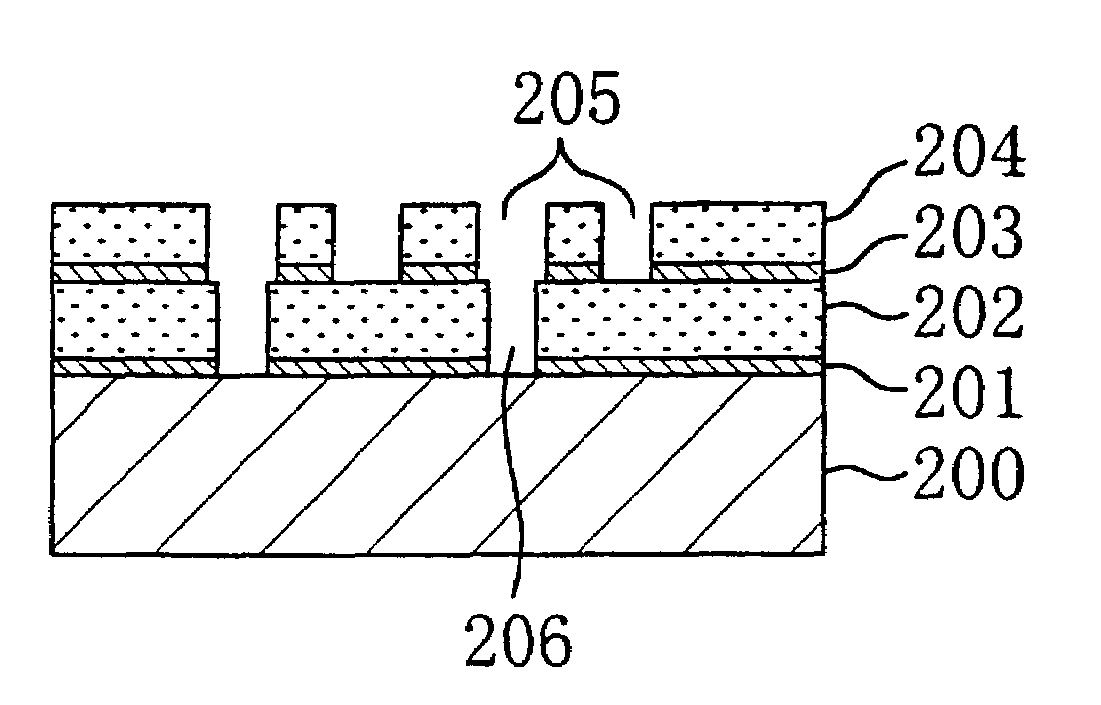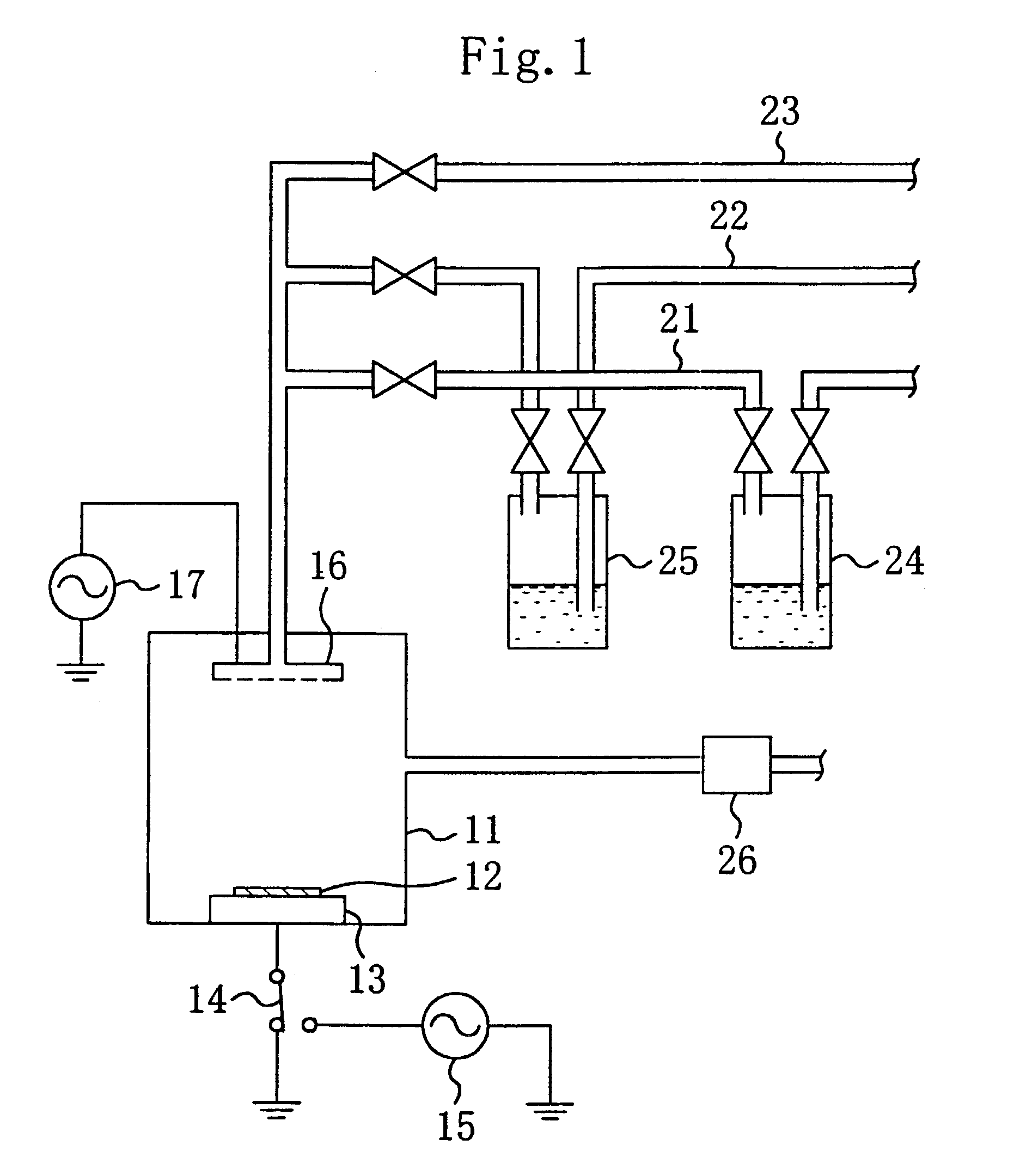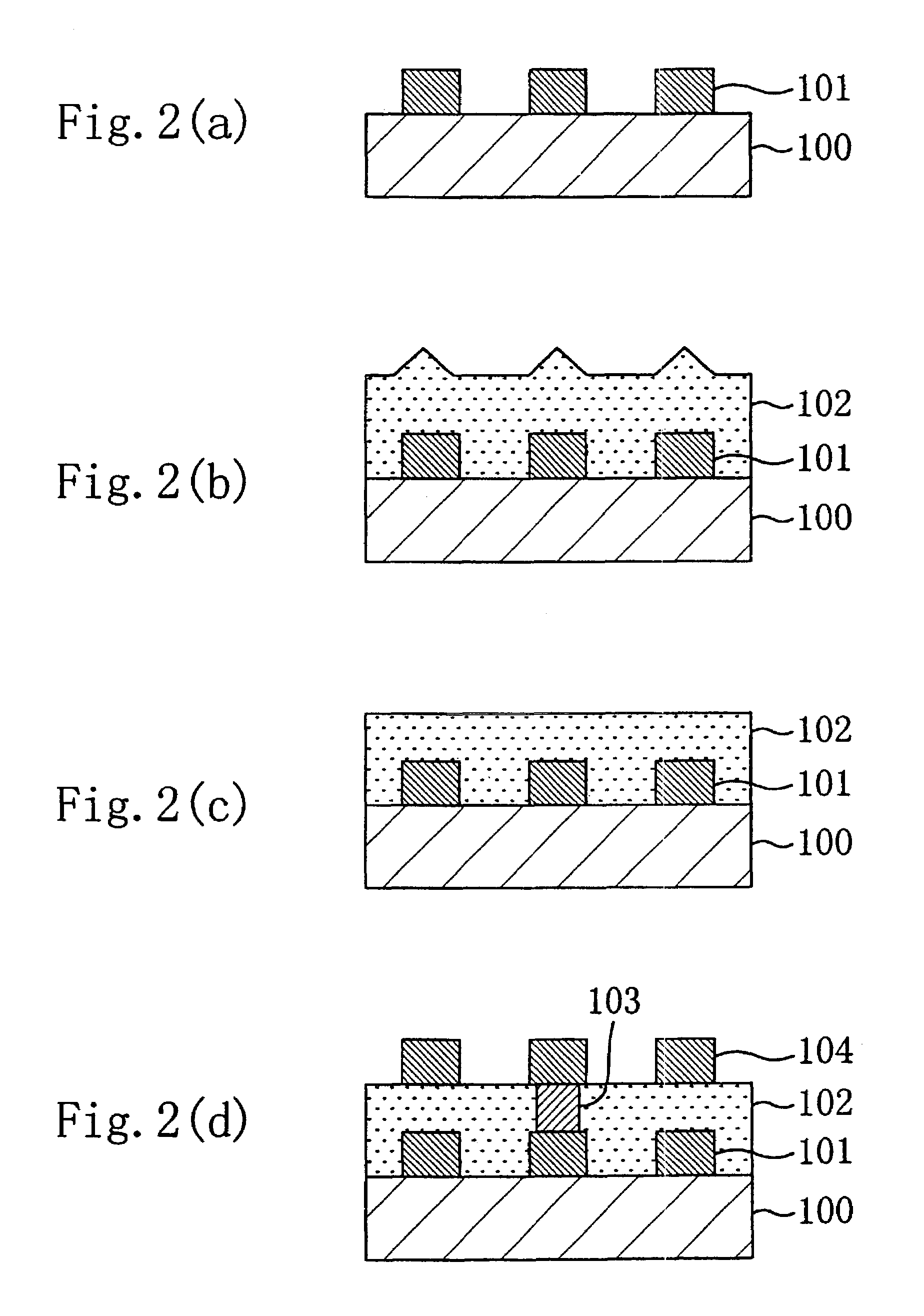Method of forming interlayer insulating film
a technology of interlayer insulating film and film layer, which is applied in the direction of coating, chemical vapor deposition coating, plasma technique, etc., can solve the problems of fatal failure, difficult to use silicon oxide film, and degradation of lsi performance, so as to improve the heat resistance of the interlayer insulating film, improve the formability, and improve the heat resistance. the effect of the film
- Summary
- Abstract
- Description
- Claims
- Application Information
AI Technical Summary
Benefits of technology
Problems solved by technology
Method used
Image
Examples
first embodiment
[0066]An interlayer insulating film according to a first embodiment is a plasma polymerization film formed by inducing plasma polymerization of a material containing, as a main component, phenyltrimethoxysilane which is an organic silicon compound represented by the following general formula:
R1xSi(OR2)4-x
(where R1 is a phenyl group or a vinyl group; R2 is an alkyl group; and x is an integer of 1 to 3).
[0067]A description will be given to a method of forming the interlayer insulating film according to the first embodiment.
[0068]First, the semiconductor substrate 12 is placed on the sample stage 13 heated to, e.g., 400° C. and grounded by the change-over switch 14 and then the reaction chamber 11 is evacuated by the vacuum pump 26.
[0069]Next, phenyltrimethoxysilane represented by the following Chemical Formula 1:
[0070]
is contained in the first container 24, while carrier gas composed of, e.g., argon is supplied at a flow rate of 480 cc / min to the first container 24 so that bubbled phe...
second embodiment
[0085]An interlayer insulating film according to a second embodiment is a fluorinated amorphous carbon film formed by inducing plasma polymerization of a material having, as a main component, 1,1,1,3,3-pentafluorpropene which is a fluorinated carbon compound having a double bond of carbon atoms in a molecule thereof and containing a hydrogen atom.
[0086]A description will be given to a method of forming the interlayer insulating film according to the second embodiment.
[0087]First, the semiconductor substrate 12 is placed on the sample stage 13 grounded by the change-over switch 14 and then the reaction chamber 11 is evacuated by the vacuum pump 26 .
[0088]Next, 1,1,1,3,3-pentafluoropropene is contained in the first container 24, while carrier gas composed of, e.g., argon is supplied at a flow rate of 50 to 500 sccm to the first container 24 so that bubbled 1,1,1,3,3-pentafluoropropene is introduced into the reaction chamber 11.
[0089]After the pressure inside the reaction chamber 11 is...
third embodiment
[0097]An interlayer insulating film according to a third embodiment is a fluorinated amorphous carbon film formed by inducing plasma polymerization of a material having, as a main component, hexafluoropropene which is a fluorinated carbon compound having a double bond of carbon atoms in a molecule thereof and containing no hydrogen atom.
[0098]Since the third embodiment has been implemented by replacing the material used in the second embodiment, a description will be given only to the material.
[0099]When hexafluoropropene is introduced into the reaction chamber 11, it is partially decomposed and changed into a plasma, while monomers, ions, and radicals are generated as decomposition products and polymerized to form the interlayer insulating film composed of the plasma polymerization film on the semiconductor substrate 12.
[0100]Since hexafluoropropene according to the third embodiment contains no hydrogen atom, the resulting interlayer insulating film was a fluorinated amorphous carb...
PUM
| Property | Measurement | Unit |
|---|---|---|
| heat resistance | aaaaa | aaaaa |
| dielectric constant | aaaaa | aaaaa |
| dielectric constant | aaaaa | aaaaa |
Abstract
Description
Claims
Application Information
 Login to View More
Login to View More - R&D
- Intellectual Property
- Life Sciences
- Materials
- Tech Scout
- Unparalleled Data Quality
- Higher Quality Content
- 60% Fewer Hallucinations
Browse by: Latest US Patents, China's latest patents, Technical Efficacy Thesaurus, Application Domain, Technology Topic, Popular Technical Reports.
© 2025 PatSnap. All rights reserved.Legal|Privacy policy|Modern Slavery Act Transparency Statement|Sitemap|About US| Contact US: help@patsnap.com



